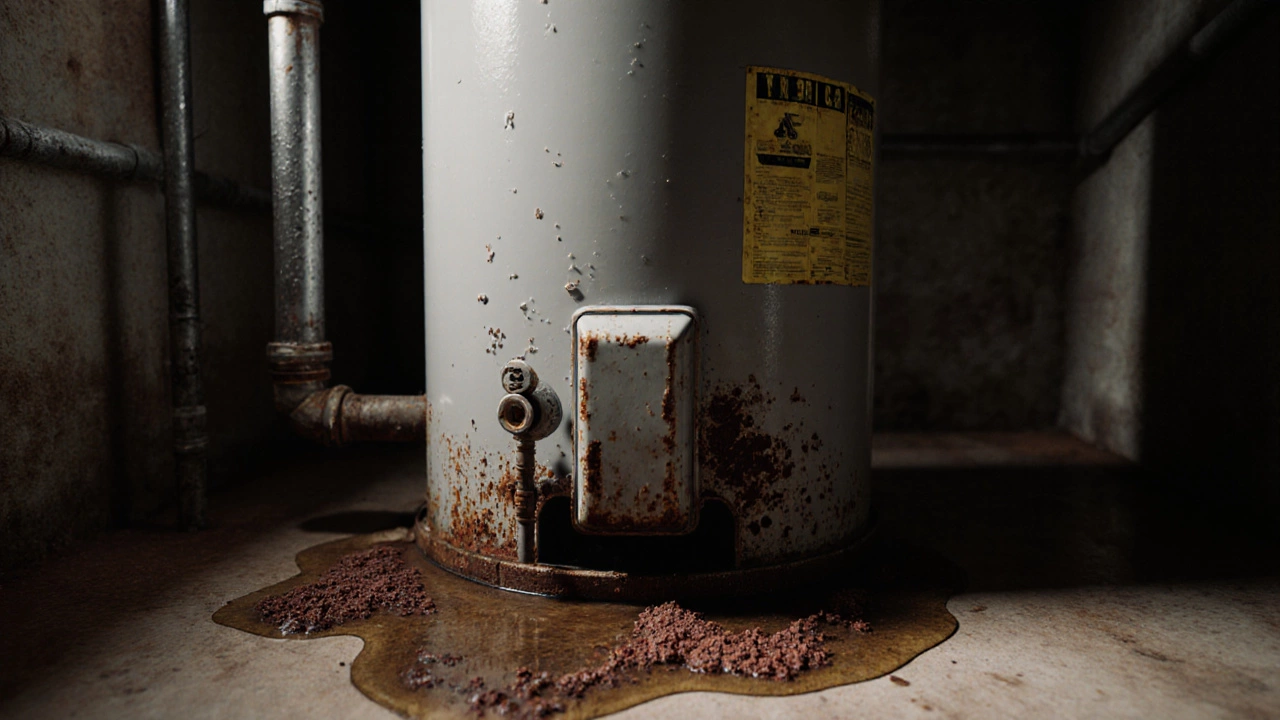Troubleshooting Frequent Water Heater Resets for Consistent Hot Water
January 22 2025Water Heater Signs of Failure: Common Red Flags and What to Do Next
When your water heater, a household appliance that heats and stores water for showers, laundry, and cleaning. Also known as a hot water tank, it’s one of the most taken-for-granted systems in your home—until it stops working. A failing water heater doesn’t always burst with a flood. More often, it gives you quiet warnings long before it quits. These aren’t just annoyances—they’re signals that something inside is wearing out, corroding, or failing. Ignoring them can lead to expensive repairs, emergency calls, or even water damage in your walls and floors.
One of the clearest water heater signs of failure, visible clues that the system is nearing the end of its lifespan or has a critical fault is discolored water. If your hot water comes out rusty, brown, or cloudy, it’s usually rust inside the tank. That means the lining is breaking down, and the metal tank is corroding from the inside. Another big red flag is strange noises—popping, rumbling, or banging. That’s sediment buildup at the bottom of the tank, which traps heat and forces the metal to expand and contract. Over time, this wears out the tank faster and cuts efficiency. Then there’s the lack of hot water. If you’re running out faster than before, or the water cools down in minutes, the heating element or thermostat might be failing. For gas units, a pilot light that won’t stay lit or a gas smell means immediate attention is needed.
Leaks are the most urgent sign. Even a small drip from the base of the tank isn’t just a puddle—it’s a sign the tank itself has developed a hole. No, tightening a fitting will fix it. Once the tank leaks, it’s done. And if your water heater is over 10 years old, even small issues often mean it’s cheaper to replace than repair. You’ll also notice higher energy bills, even if your usage hasn’t changed. That’s because a failing heater works harder to keep water hot. Some people try to extend life by replacing the anode rod, a sacrificial metal rod that protects the tank from corrosion, and that can help—but only if caught early. If you’re seeing multiple signs at once, replacement is almost always the smarter move.
Knowing these signs helps you act before disaster strikes. You won’t be caught off guard by a cold shower in the morning or a flooded basement. The posts below give you real-world examples of what these failures look like, how long repairs take, what they cost, and when DIY makes sense versus when you need a pro. Whether you’re dealing with a gas or electric model, whether you’re in Bedford or anywhere else, the warning signs are the same. This isn’t guesswork—it’s a checklist you can use right now to decide your next step.
 20 Nov
20 Nov
How Do You Know When a Hot Water Heater Needs to Be Replaced?
Learn the 7 clear signs your hot water heater needs replacing-rust, leaks, strange noises, and more. Save money and avoid floods by knowing when to upgrade before it fails.
Read More...



